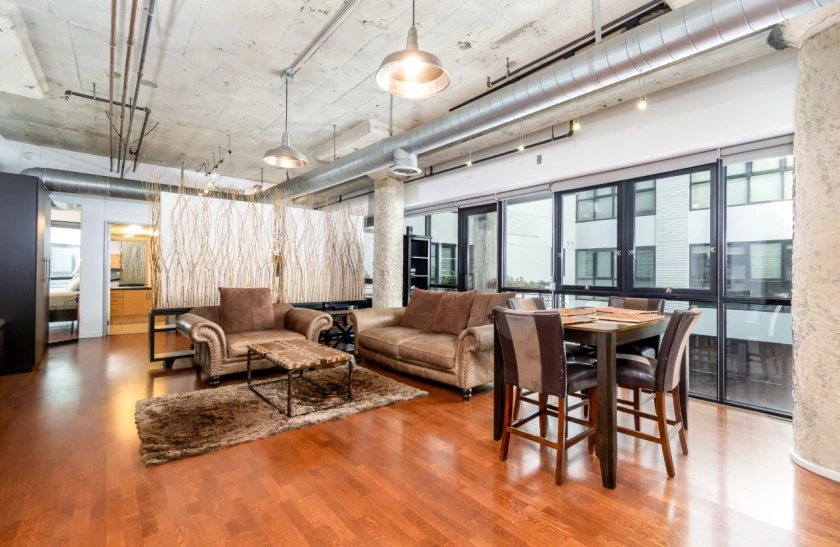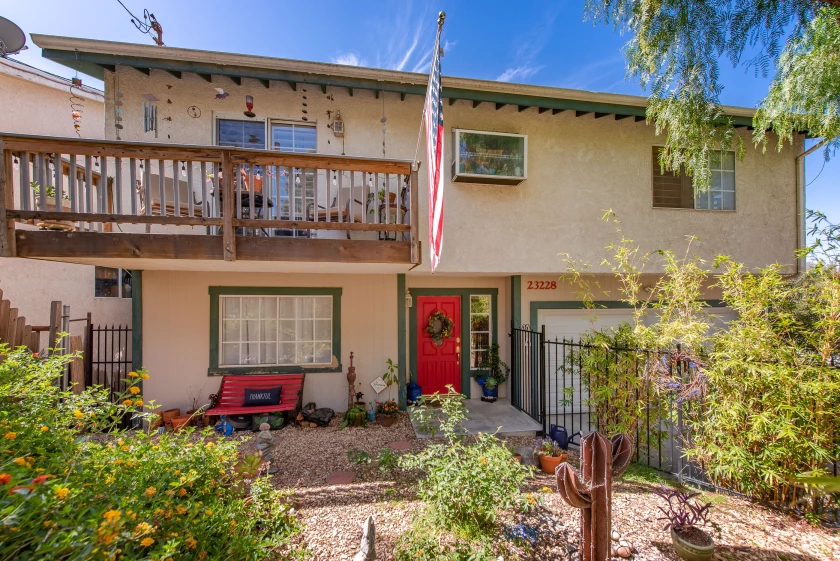From the Los Angeles Times:
What $700,000 buys in seven L.A. communities
By JACK FLEMMING | STAFF WRITER
MAY 25, 2021 5 AM PT
It’s no secret: L.A.’s historically hot real estate market is brutal for buyers. The pandemic-fueled housing boom saw L.A. County’s median home price rise to $750,000 in April, a 19% increase year-over-year.
Bidding wars and a shortage of sellers are making good deals hard to come by, but there are still plenty of great options if you look in the right neighborhoods. Here’s a look at what roughly $700,000 buys right now in seven L.A. communities.
City Terrace
Tucked just south of the 10 Freeway, City Terrace is a small, hilly community with winding streets and a healthy supply of Spanish Colonial Revival-style homes. Empty lots sell for between $100,000 and $200,000, while the few houses on the market are priced between $500,000 and $800,000.
 3916 Ramboz Dr., Los Angeles, 90063 (Ace Misiunas)
3916 Ramboz Dr., Los Angeles, 90063 (Ace Misiunas)
The house: Dressed in all black, this bold 1950s Midcentury comes with a recently remodeled main home that covers 952 square feet and a bonus space with just over 300 square feet. The main event comes out back, where tiered gardens and two platform decks take in sweeping city views.
The address: 3916 Ramboz Dr., Los Angeles, 90063
The price: $725,000
The specs: Three bedrooms and two bathrooms in 1,264 square feet
The agent: Samira Tapia of Compass
Historic Filipinotown
Dubbed HiFi, Historic Filipinotown enjoys a central location with easy access to both Vista Hermosa Natural Park and Echo Park Lake. You’ll be hard-pressed to find many single-family homes for under $1 million, but there are a good number of duplexes and condos up for grabs for cheaper.
 249 N. Bonnie Brae St. #3, Los Angeles, 90026 (Dusan Simonovic for Estate Photos LA)
249 N. Bonnie Brae St. #3, Los Angeles, 90026 (Dusan Simonovic for Estate Photos LA)
The house: Centrally located near Echo Park Lake, this bright three-bedroom unit sits on the top level of a gated “tenancy in common” building, which means that residents share ownership and maintenance of the property with the other residents. This place includes recessed lighting, dual-pane windows and a private outdoor patio.
The address: 249 N. Bonnie Brae St. #3, Los Angeles, 90026
The price: $689,000
The specs: Three bedrooms and two bathrooms in 1,138 square feet
The agent: Elizabeth Cappola of Coldwell Banker Realty
Boyle Heights
Known as a bastion of Latino culture, Boyle Heights boasts good food, a great location and housing stock that has become more expensive over the years due to gentrification. The 12 single-family homes currently on the market range from $399,000 up $1.2 million.
 3306 Gleason Ave., Los Angeles, 90063 (Joseph Cordova)
3306 Gleason Ave., Los Angeles, 90063 (Joseph Cordova)
The house: A yellow door offsets the blue exterior of this remodeled one-story with new floors, new tile, new appliances and a new kitchen. For extra income, buyers can rent out the back bedroom, which comes with its own entrance and kitchen.
The address: 3306 Gleason Ave., Los Angeles, 90063
The price: $688,000
The specs: Four bedrooms and three bathrooms in 1,262 square feet
The agent: Joseph Cordova of Castle Estate Properties
Downtown L.A.
Downtown L.A., like many vertical-living communities, became slightly less attractive during the pandemic as homebuyers across the country opted for more space — even if it meant a longer commute. The trend made it a relatively affordable place to land if you don’t need more than one or two bedrooms, and there’s a host of options in every downtown district with views and amenities.
 1100 S. Grand Ave. Unit A409, Los Angeles, 90015 (Steve Zarikyan)
1100 S. Grand Ave. Unit A409, Los Angeles, 90015 (Steve Zarikyan)
The house: The bones of this artsy live-work space date back to 1923, but it was converted into a loft in 2005 and features 12-foot ceilings, exposed air ducts and original concrete columns. A private balcony takes in views of the South Park neighborhood, and building amenities include a sand volleyball court, basketball court and three-lane lap pool.
The address: 1100 S. Grand Ave. Unit A409, Los Angeles, 90015
The price: $718,000
The specs: Two bedrooms and two bathrooms in 1,160 square feet
The agents: Greg Stangl and Arrington Williams of the Agency
Harvard Heights
There’s loads of architectural history in Harvard Heights. The small, dense neighborhood lies within a historic overlay zone, and it also houses what’s thought to be the last L.A. home designed by the iconic Craftsman duo Greene and Greene. For food, stop by Mexican joint Guelaguetza, which landed on the 2020 L.A. Times list of the 101 best L.A. restaurants.
 1731 S. Normandie Ave., Los Angeles, 90006 (Preview First)
1731 S. Normandie Ave., Los Angeles, 90006 (Preview First)
The house: Built 120 years ago, this three-bedroom bungalow draws the eye with a front yard of citrus trees and a spacious front porch. Out back, there’s a covered deck, grassy yard and garage.
The address: 1731 S. Normandie Ave., Los Angeles, 90006
The price: $700,000
The specs: Three bedrooms and two bathrooms in 1,176 square feet
The agent: Shaun Radcliffe and Michelle Silvestri of Coldwell Banker Realty
South L.A.
South L.A. is huge. According to The Times’ Mapping L.A. project, it spans more than 50 square miles with 28 neighborhoods, and therefore offers a vast variety of housing stock. The Multiple Listing Service shows more than 250 single-family homes up for sale in the area, with prices ranging from $300,000 up past $3 million.
 1259 W. 83rd St., Los Angeles, 90044 (Sean Sullivan)
1259 W. 83rd St., Los Angeles, 90044 (Sean Sullivan)
The house: Spanish in style, this 1930s spot boasts clay tile and arched entryways on the outside and beamed ceilings inside. Floors of tile and hardwood alternate in the living spaces, which lead to a small fenced yard out back.
The address: 1259 W. 83rd St., Los Angeles, 90044
The price: $699,000
The specs: Three bedrooms and two bathrooms in 1,357 square feet
The agent: Sean Sullivan of Pinnacle Estate Properties
Chatsworth
If space is what you seek, the San Fernando Valley has plenty. Chatsworth is a pleasant valley suburb tucked just south of the Santa Susana Mountains with parks, trails and a handful of homes for under $1 million.
 23228 Alta Way, Chatsworth, 91311 (Julliann Woods)
23228 Alta Way, Chatsworth, 91311 (Julliann Woods)
The house: The largest home on the list, at nearly 1,600 square feet, this traditional-style house takes advantage with three bedrooms, three bathrooms, a galley-style kitchen and living room with a brick fireplace. Multiple balconies hang off the house, overlooking an outdoor space with a scenic deck, fire pit and hot tub.
The address: 23228 Alta Way, Chatsworth, 91311
The price: $684,500
The specs: Three bedrooms and three bathrooms in 1,598 square feet
The agent: Julliann Woods of Pinnacle Estate Properties
Link:
https://www.latimes.com/business/sto...la-communities



